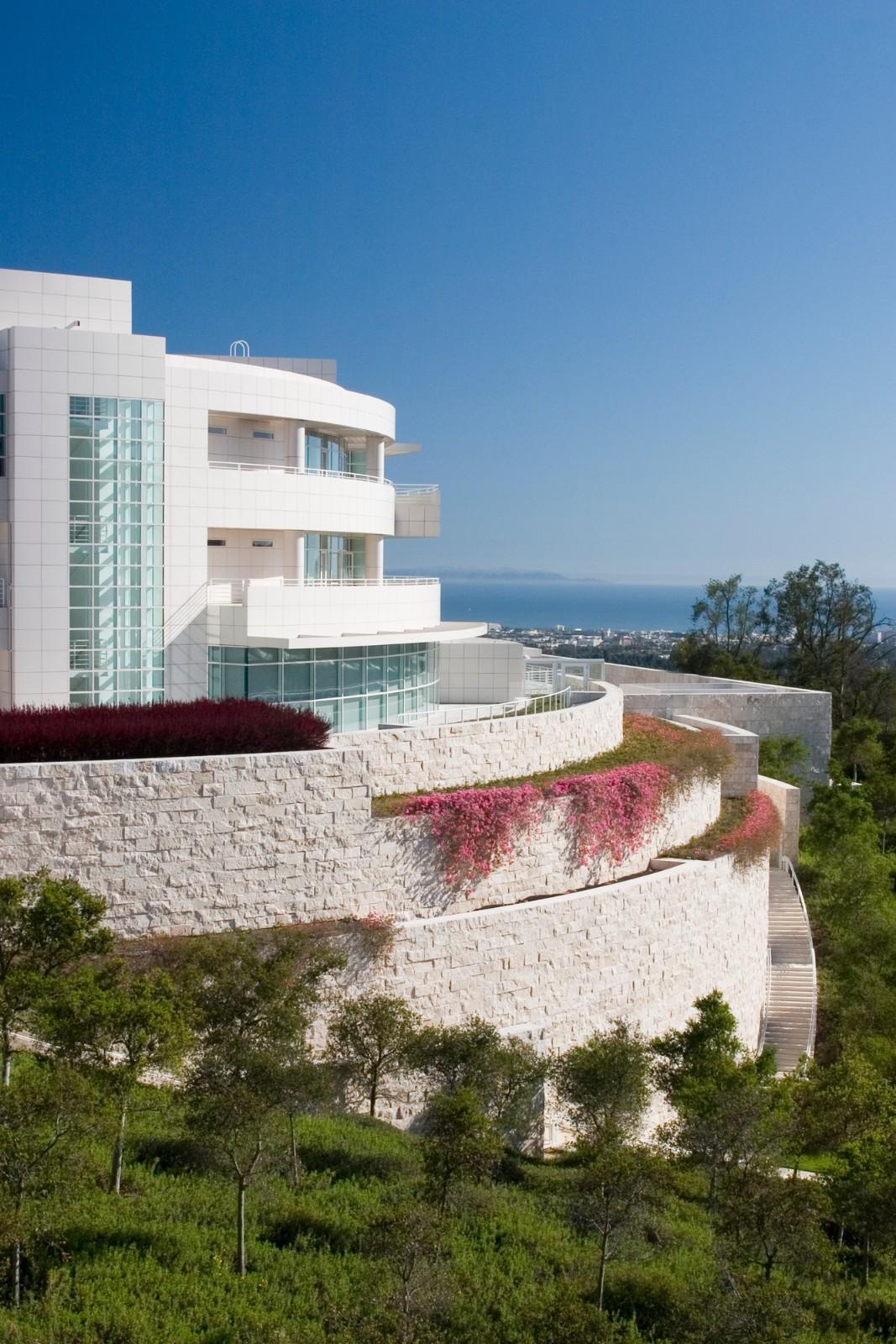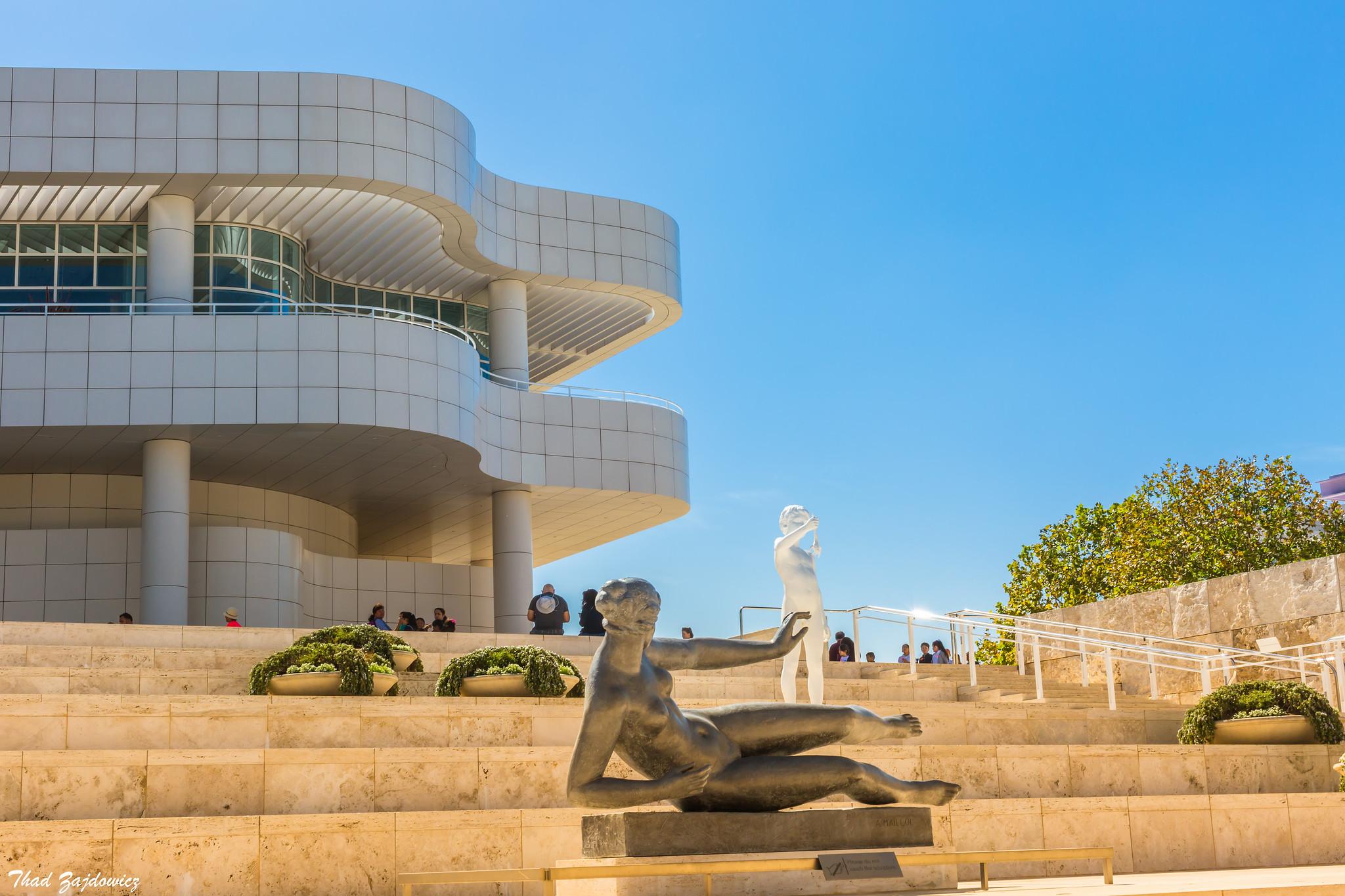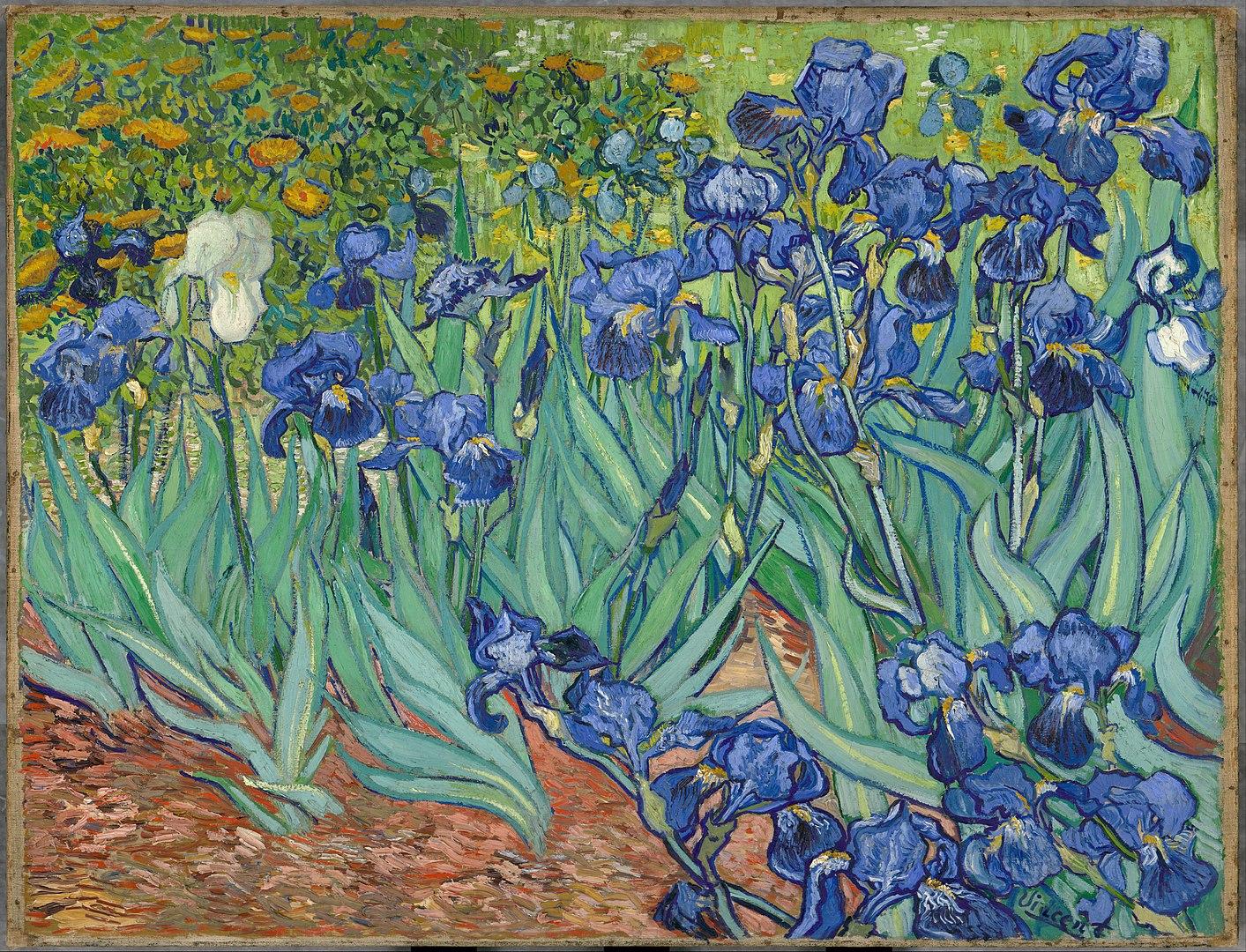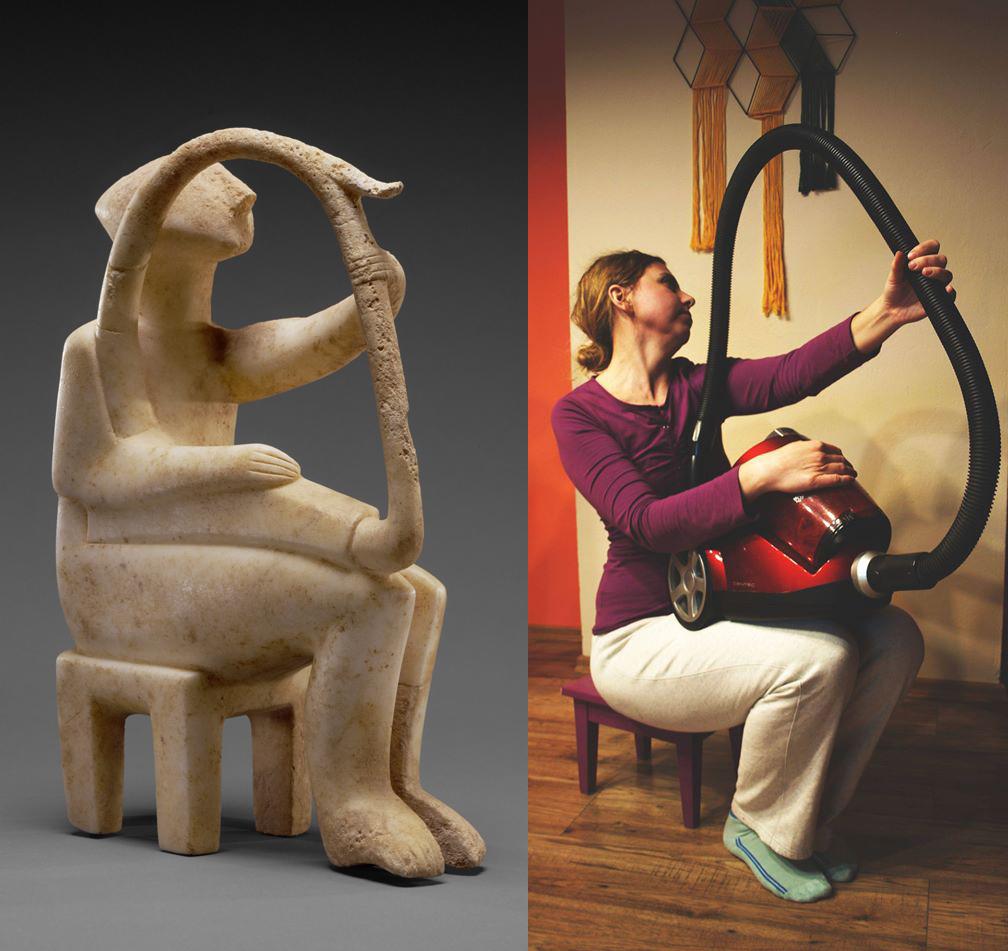1. Admission is free. Additionally, to promote art appreciation, all images the Getty owns rights to are in the public domain, which means over 100,000 images are free to download through their Open Content Program.
2. Lead architect Richard Meier beat out fierce competition to design the $733 million Getty Center. Set on 110 acres overlooking the Pacific, the Getty Center took 14 years to finish. Designed to harmonize with the surrounding landscape, the stunning curvilinear complex is laid out along two natural ridges, and perches 900 feet above I-405 like a post-modern temple. Both solid and airy, its limestone archways and balconies frame extraordinary views.
3. Its concrete and steel frame is covered with polymer-coated aluminum and travertine limestone mined from the same quarry used for the Roman Colosseum. Visitors often hunt for fossils in the travertine tiles.

































